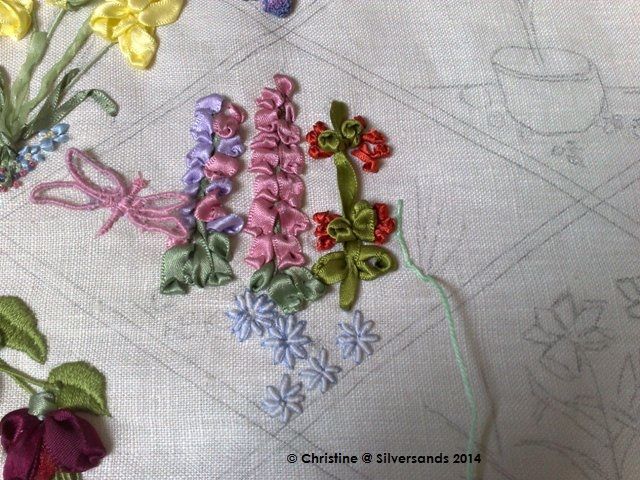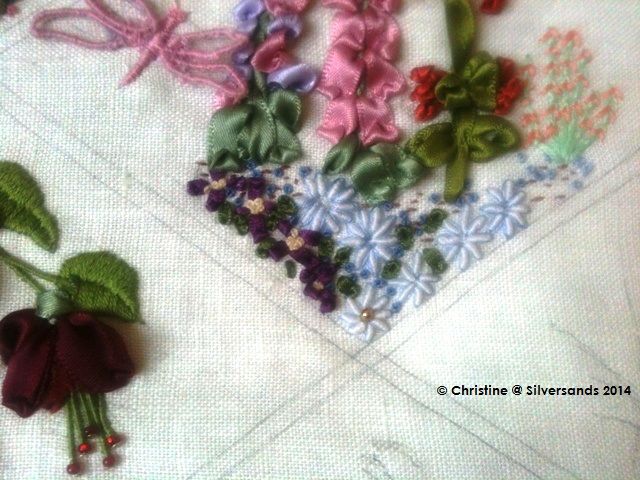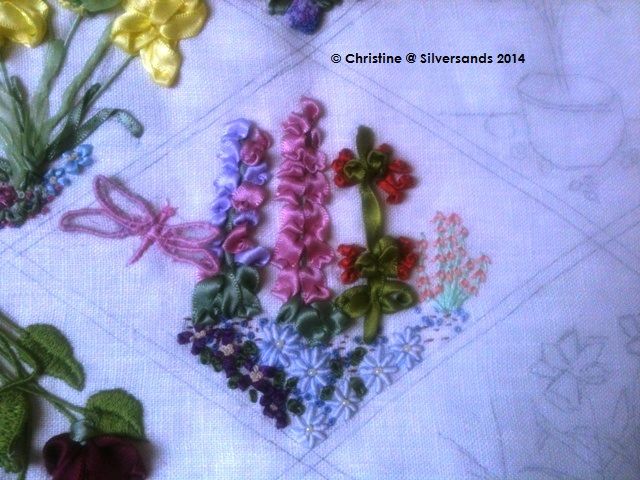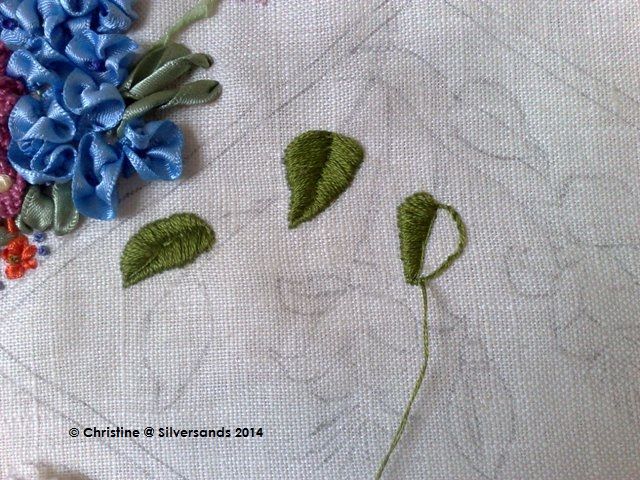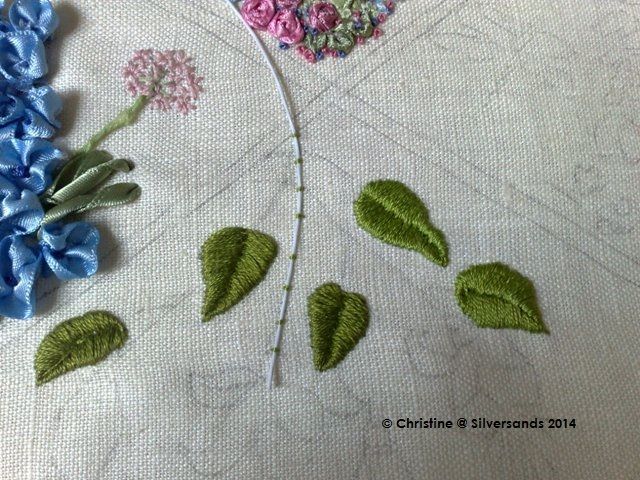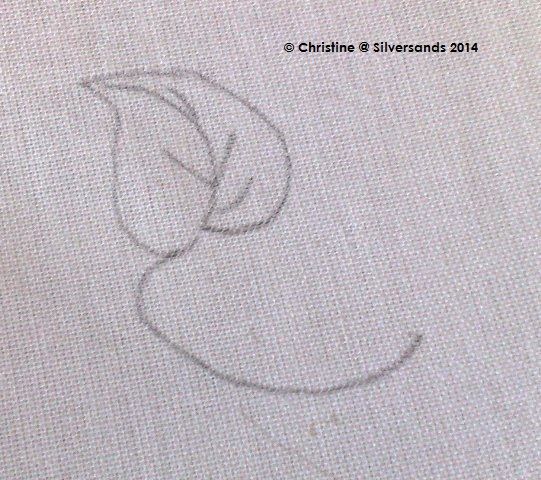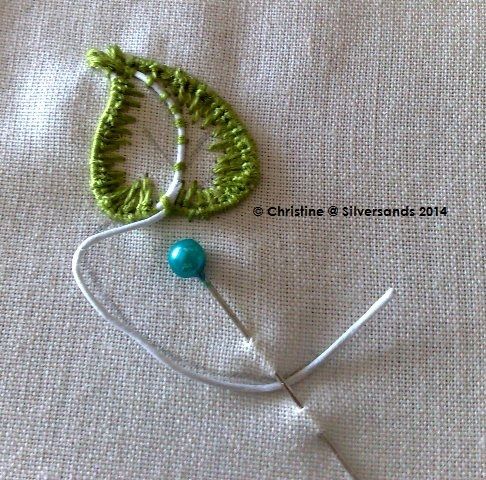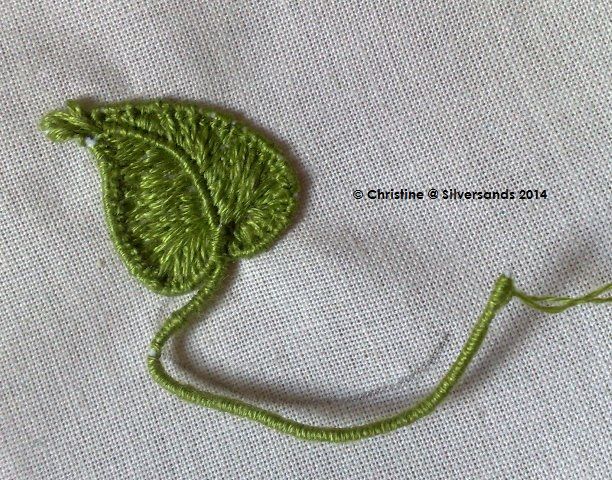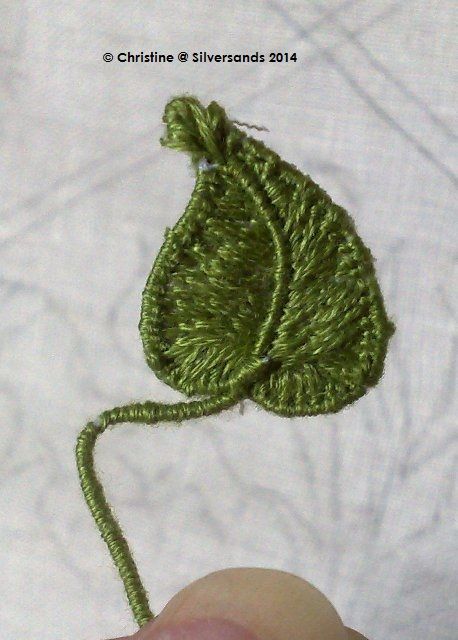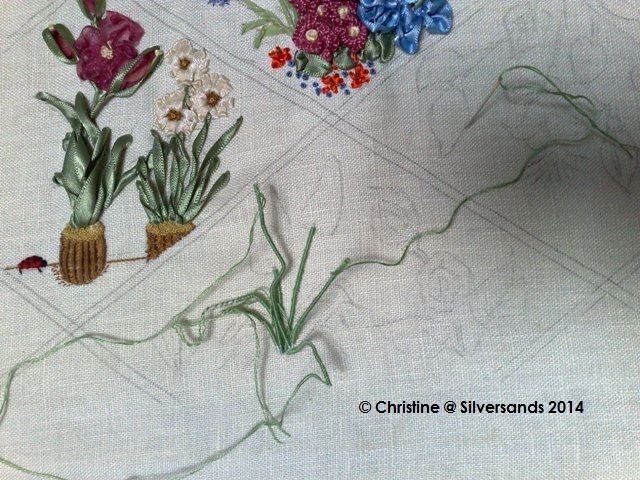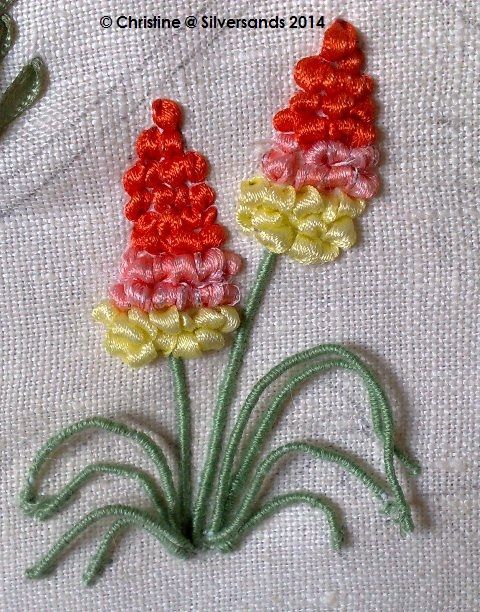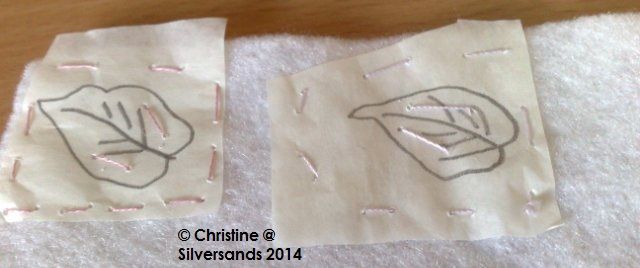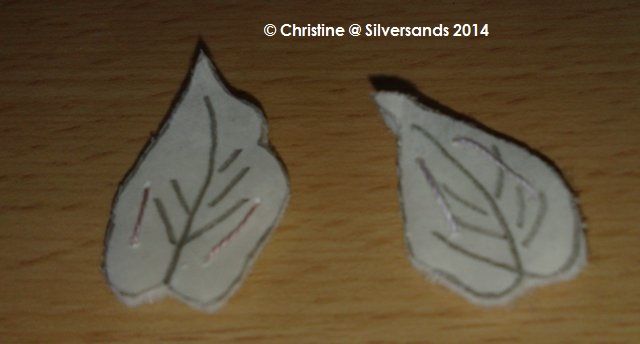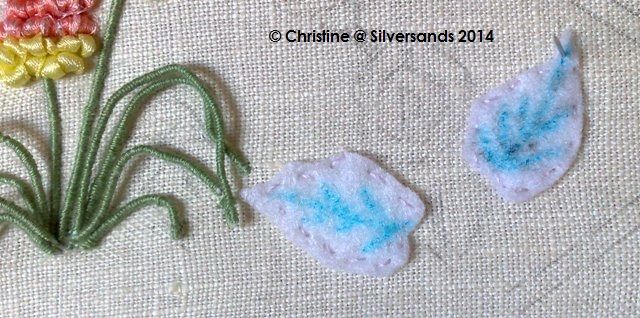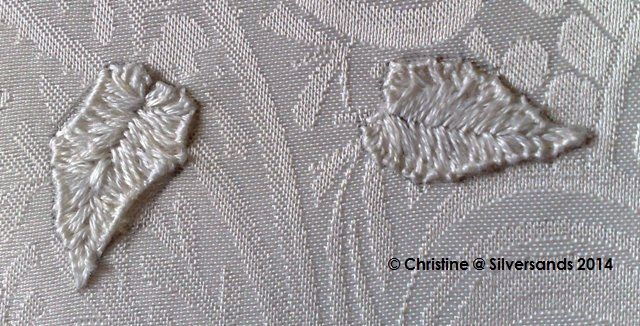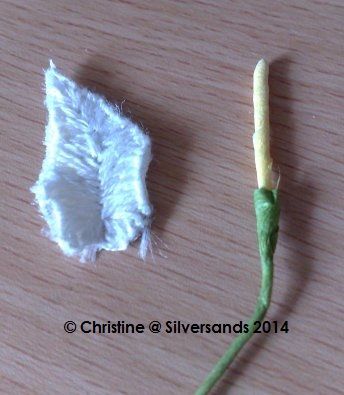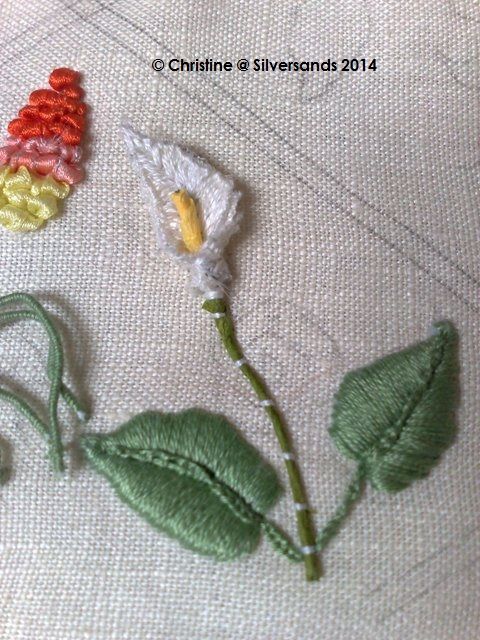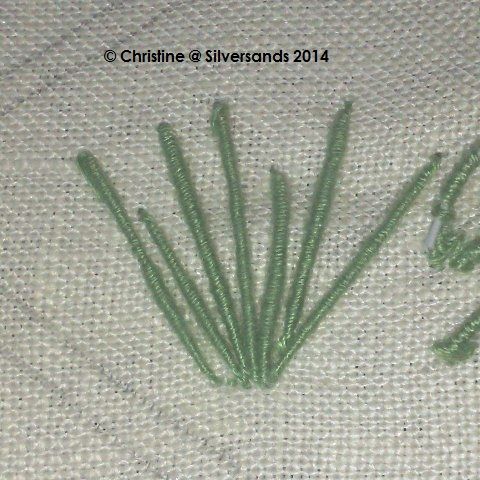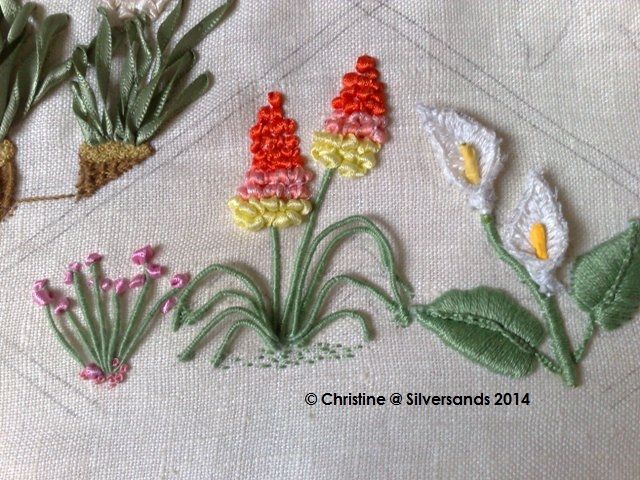Panel 10 - An Orange Tree.
Threads - DMC 51 (variegated) 420 / 470 / Anchor 300.
Ribbons - GB sage green / GB cornflower blue.
Scrap fabric
Bird Charm.
Cake Wire.
Wooden beads
Starting with the basket of the Orange tree, draw the basket shape on the spare fabric and couch the cake wire around the top, then over stitch like this with DMC 420
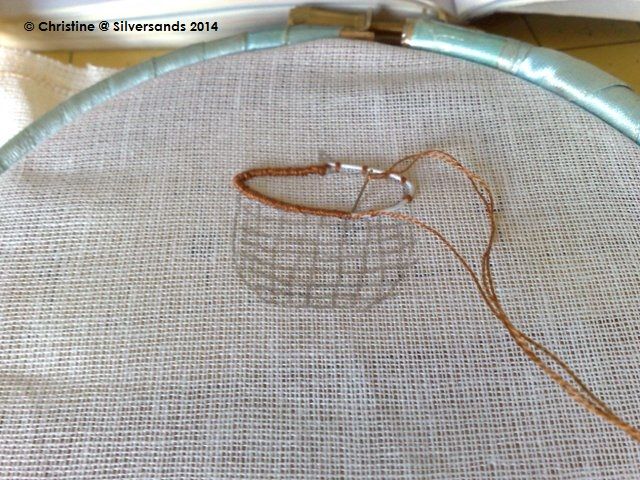
Next stem stitch the sides, and then make long straight stitches down the basket.

Next weave over and under the straight stitches like this 
To make a woven basket ending with this 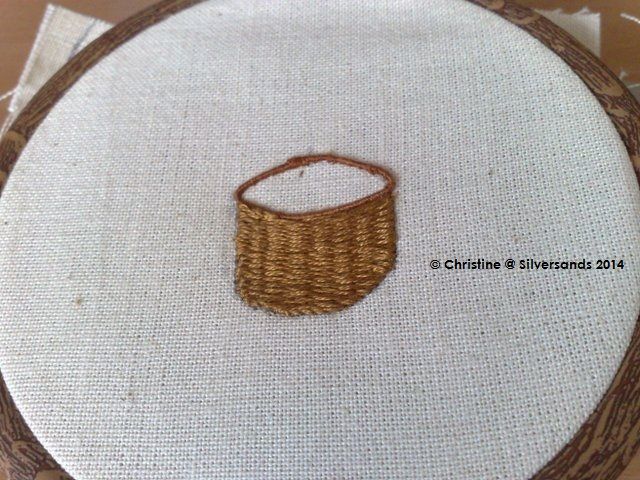
make seed stitches in the top of the basket like this 
then make a running stitch around the outline of the basket.
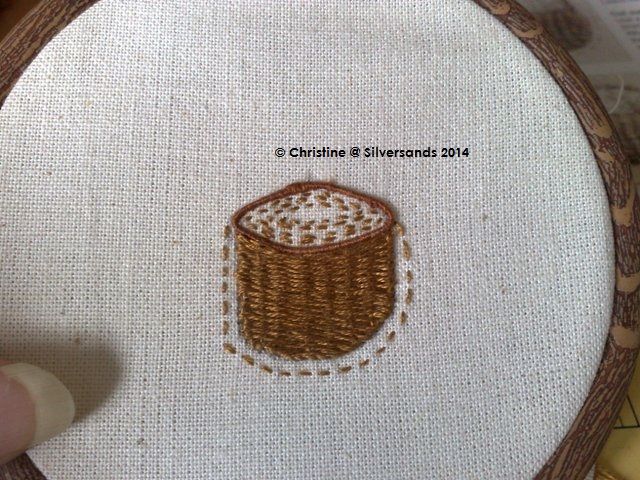
Cut the basket out, make sure you don't cut in to the running stitch as it will be gathered up. 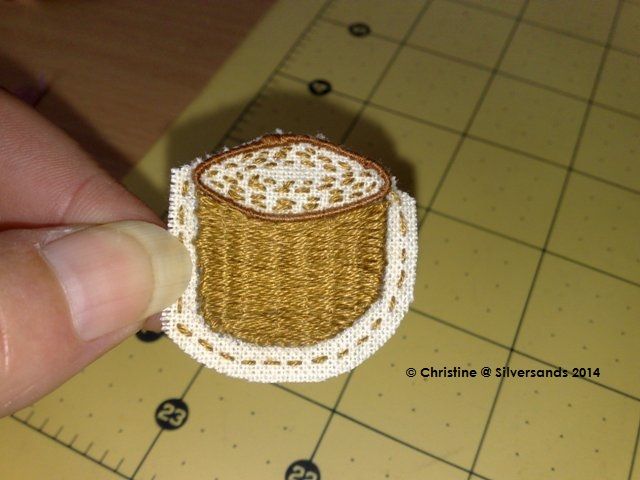
gather the threads and then stitch the top and sides of the basket to the ground fabric but leave the bottom open for stuffing.
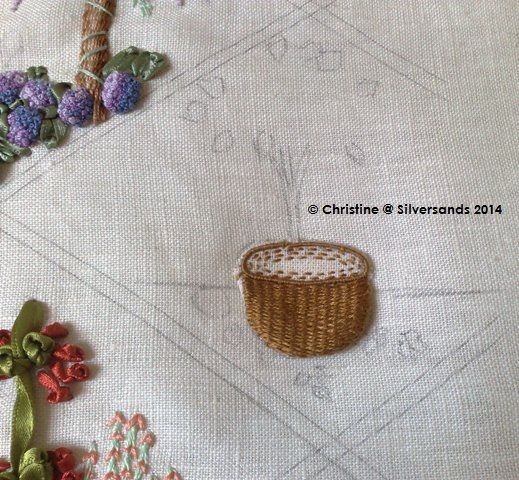
Push the sides of the basket in as you stitch to hide the cut edges, then stuff from the bottom and when happy with the shape stitch the bottom of the basket closed.
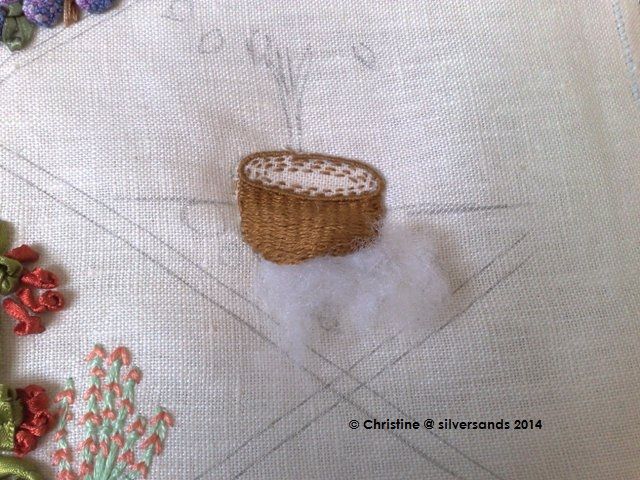
next cut your cake wire in to 8cm lengths 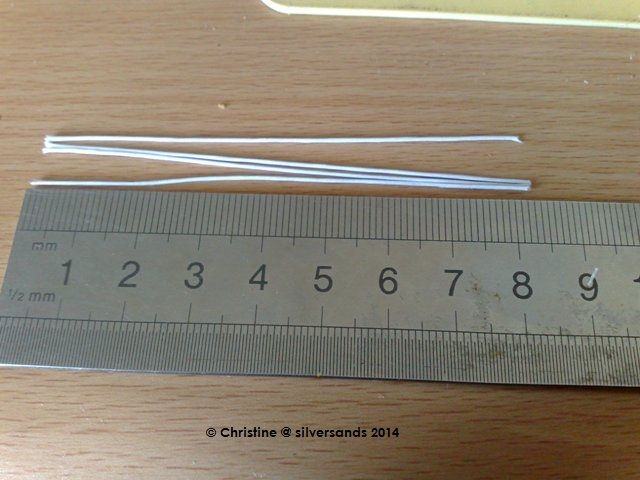
Twist them together to make a tree. 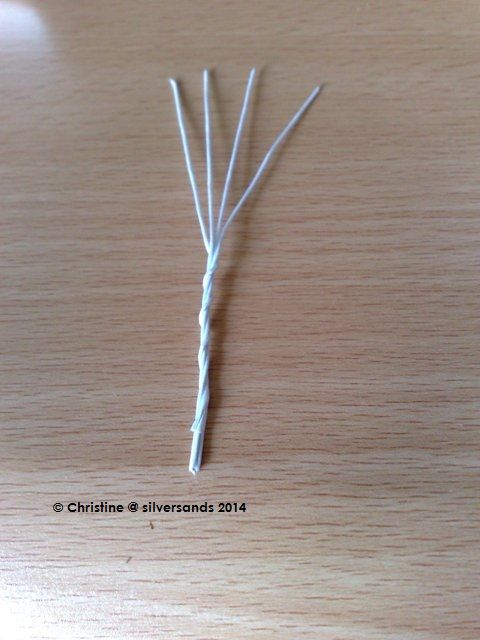
make a small cut in the top of the basket and insert the wire. 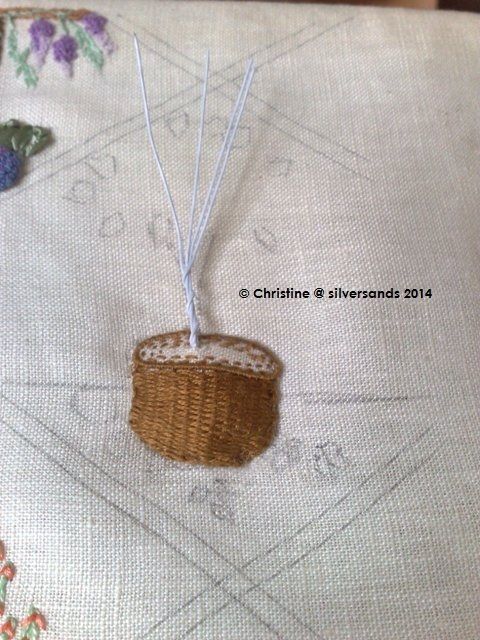
Now its time to wrap the wires, so that the branches are free floating, no couching to the ground fabby 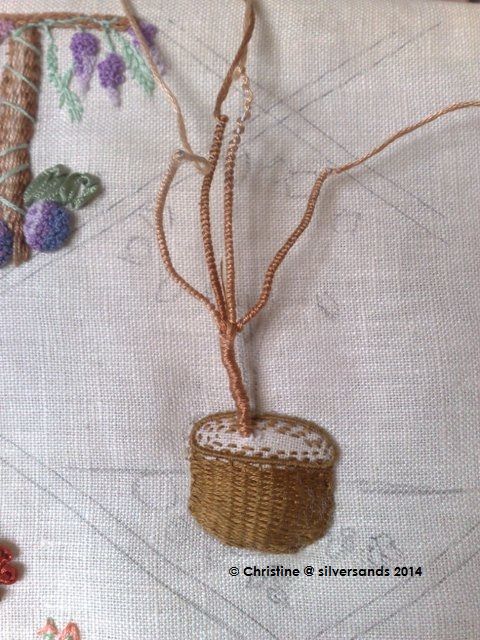
using the long tail threads, secure the tips of the branches where you want them to be 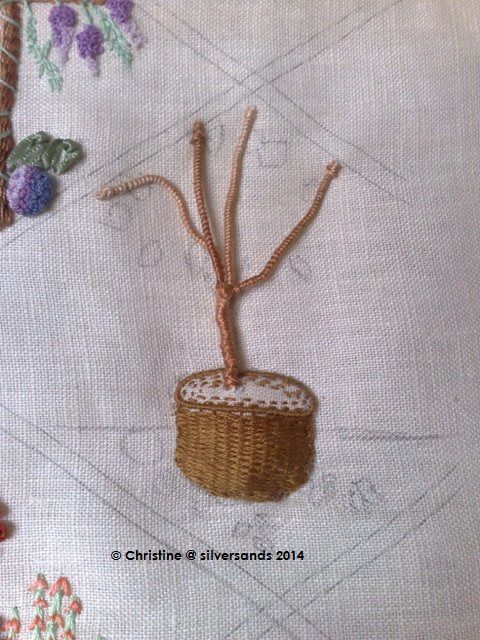
Next, making the oranges, using small wooden beads and varigated thread 51, cutting the lengths with the colour variations I wanted, I wrapped the bead with the thread. 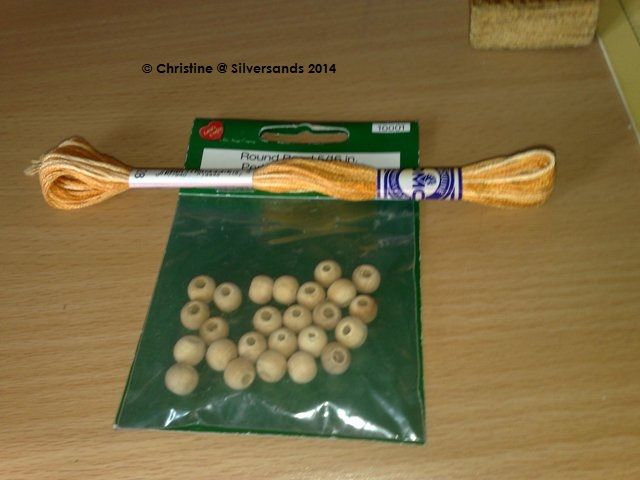

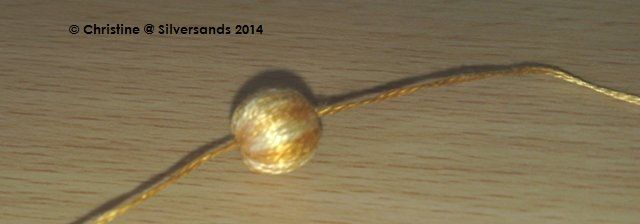
ending with this 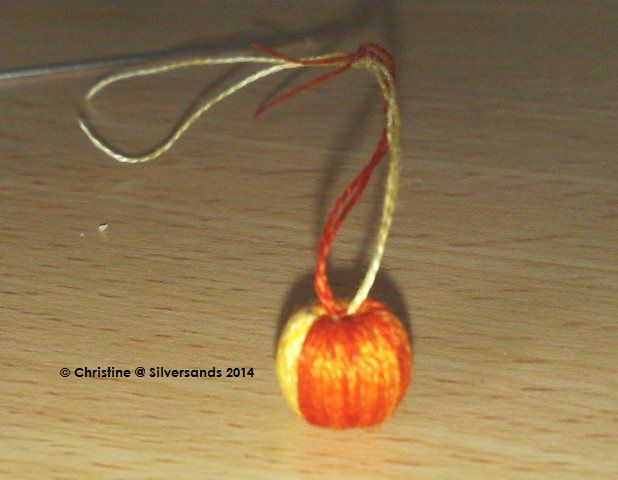
Make 12 or 13 of these oranges, I liked the variegated thread as opposed to bright orange. As I think it looks like the oranges are ripening on the tree and at various colour stages.
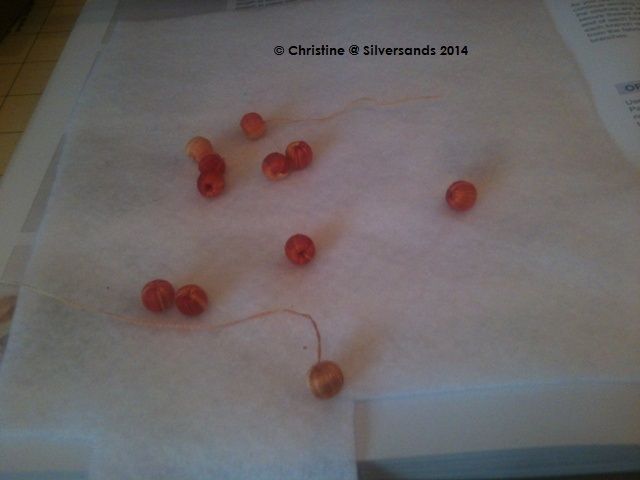
using 470, make a knot in one end then thread it through the orange, then stitch the orange to the ground fabric
continue this using all the oranges but leave one to stitch to the ground by the basket.
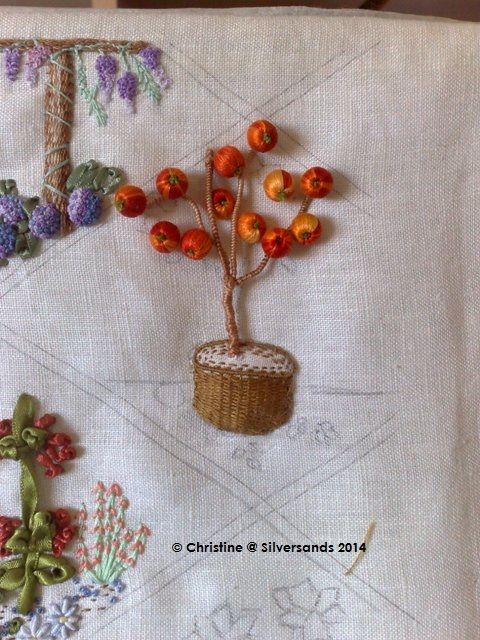
Next using the sage green ribbon and detached chain stitch, fill up the spaces between the oranges to make leaves in the tree, make a few leaves around the orange on the ground and scatter below the basket. Using the cornflower blue ribbon, make the forget me knots using flat ribbon stitch filling the center with a 4 wrap French knot using anchor 300 yellow.
Make straight stitches, with a couple of couching stitches in 420 to denote the ground tiles.
Ending with this
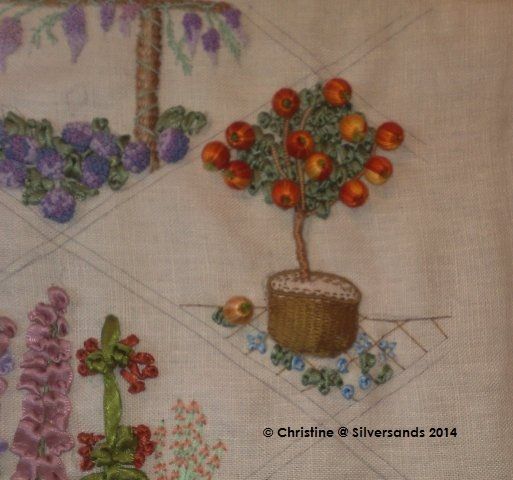
Lastly add the bird charm and so we end with this
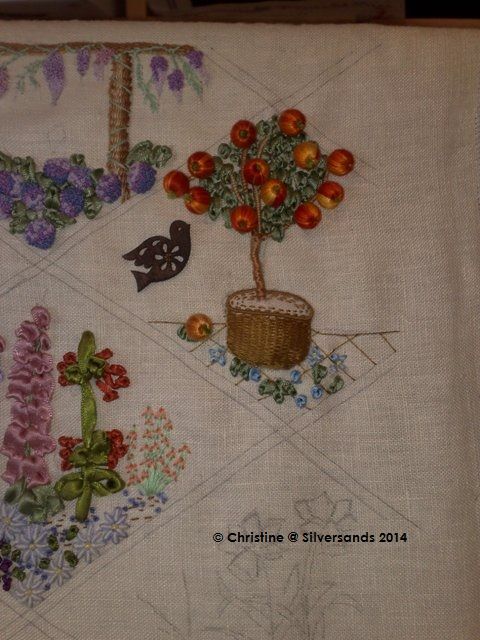
So ends panel 10, we only have 2 more panels to do, next time Pansies. Tulips and a butterfly.





